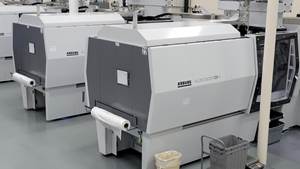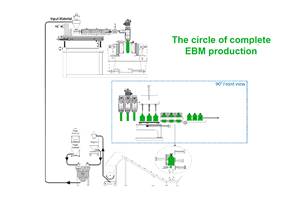Housing’s Faster Growth Could Boost Appliance Production
Appliances
Leading indicators suggest continued growth in appliances.
The real 10-year U.S. Treasury bond rate is a very important leading indicator for the housing market and the appliance industry. Changes in this key interest rate tend to lead the housing market by 14 months and appliance production by 24 months.
The nominal 10-yr Treasury rate remained quite low in February. In fact, it was below 2% for the second month in a row, which was well below the historical average of 6.4%. The real 10-yr treasury rate, which is the nominal interest rate minus the rate of inflation, was 0.59% in February 2015. This was the first time since February 2013 that the real rate increased from the previous month. And it was the first time since July 2013 that the real rate increased from one year before.
The reason the real Treasury rate increased from a year ago is that the rate of inflation has dropped dramatically. The annual rate of inflation was negative in the last two months, which hasn’t happened since October 2009. With very low inflation and a rising yield, it is likely that the real 10-yr Treasury rates will continue to increase.
However, given that the 10-yr Treasury rate leads housing permits by 14 months, the declining trend in the interest rate over the last 15 to 18 months is signaling significant growth in housing permits and new construction. February’s housing permits increased 8.8% compared with a year ago, the fastest month-over-month change since September 2014. On annual basis, housing permits have grown at an accelerating rate in the last two months. That has not happened since October and November 2011. Based on the previous decline in the real 10-yr treasury rate, housing permits should see continued accelerating growth in 2015.
Current appliance production levels still are significantly below any time since 1994. But appliance production has been growing since March 2013. This is significant because this is the first period of growth in appliance production since July 2003 to July 2005. The rate of growth has been consistently strong since early 2014. If the accelerating growth trend in housing permits pans out, then appliance production should see even faster growth in 2015. It’s possible that appliance production could grow at its fastest rate in nearly 20 years in 2015.
While much less of a factor in forecasting appliance production, it is important than appliance spending has been growing since early 2013. So far in 2015, appliance spending has been growing much faster—the fastest in almost a decade. When growth in appliance spending is this strong, it can provide a boost to appliance production even if housing permits remain relatively weak.
So, the leading indicators seem to be pointing to continued strong growth in appliance production. And, if the housing market improves, then appliance production could grow quite rapidly this year.
Related Content
Latest Data on Bottled Water Shows Continued Strong Growth
Bottled water’s volume surpassed soft drinks for the first time in 2016 and has done so every year since.
Read MoreConsistent Shots for Consistent Shots
An integral supplier in the effort to fast-track COVID-19 vaccine deployment, Retractable Technologies turned to Arburg and its PressurePilot technology to help deliver more than 500 million syringes during the pandemic.
Read MoreMultilayer Solutions to Challenges in Blow Molding with PCR
For extrusion blow molders, challenges of price and availability of postconsumer recycled resins can be addressed with a variety of multilayer technologies, which also offer solutions to issues with color, processability, mechanical properties and chemical migration in PCR materials.
Read MoreGet Color Changes Right In Extrusion Blow Molding
Follow these best practices to minimize loss of time, material and labor during color changes in molding containers from bottles to jerrycans. The authors explore what this means for each step of the process, from raw-material infeed to handling and reprocessing tails and trim.
Read MoreRead Next
Making the Circular Economy a Reality
Driven by brand owner demands and new worldwide legislation, the entire supply chain is working toward the shift to circularity, with some evidence the circular economy has already begun.
Read MoreBeyond Prototypes: 8 Ways the Plastics Industry Is Using 3D Printing
Plastics processors are finding applications for 3D printing around the plant and across the supply chain. Here are 8 examples to look for at NPE2024.
Read More
.JPG;width=70;height=70;mode=crop)




















